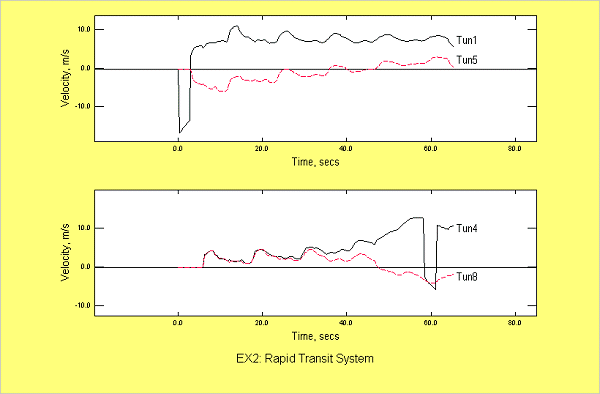Example 2: Rapid Transit System

Two horizontal tunnels, each with a cross-sectional area of 30 m2, are cross-connected at 500 m intervals by 20 m long passages with a cross-sectional area of 10 m2.
A train is stationary in the position shown in the figure when a second train travels along the other track with a specified acceleration history, having entered the system at 162 km/h.
The upper box in the graphical output (below) shows velocity histories at the left hand ends of tunnels 1 and 5. The graphs in the lower box show velocity histories at the right hand ends of tunnels 4 and 8.
In the design of rapid transit systems, attention commonly focuses on air velocities and temperatures. Velocities can cause discomfort to passengers on station platforms, on escalators and in restricted openings. The velocities indicated in this particular simulation would not be acceptable in practice at the outlet of tunnel 4. It would be essential to slow the train and it would probably also be necessary to provide draught relief in some form.

